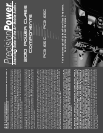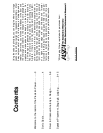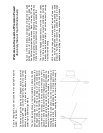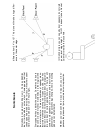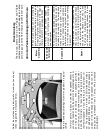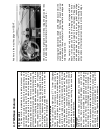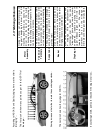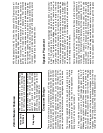
20mm Tweeter Features
Voice Coil &
Terminals
The coil is wound on a 20mm Kapton
former and sits entirely in an underhung gap
for 100% linearity and minimal distortion.
Diaphragm
We did not invent the inverted dome, but we
wish we had. We chose an anodized
aluminum inverted and self-suspended
diaphragm. The dome is textured for rigidity
and inverting the diaphragm yields more
control over sound dispersion.
Crossover Design
There are a few of ways to crossover a set of 3-way components.
A basic 3-way passive network would be the easiest. Some com-
panies sell a 2-way kit with an “Add-A-Midbass” separate kit which
combined requires 2 passive networks. Or you can use all active
crossovers with an amplifier channel per each individual driver.
While this allows the ultimate in flexibility and tuning, it also re-
quires very skilled installers/tuners or damage can easily be done.
The crossover supplied with the 2-way and 3-way kits are one in
the same. This reduces cost and simplifies installation. There is a
push-button switch to go from 2-way to 3-way application. Pretty
dang clever if we do say so ourselves!
In 2-way mode the crossover send a 12dB highpass signal to the
20mm Tweeter at 4kHz, and a 12dB lowpass signal to the 6.5”
Midbass driver at 4kHz as well. When the button is switched to 3-
way, the 6.5” Midbass speaker wires need to move down to the
new location on the crossover to make room for the 2.5” Midrange.
The Midrange section of the crossover now changes to a 400Hz
highpass - 4kHz lowpass, creating a bandpass signal for the mid-
range with plenty of protection. The new Midbass section is a
400Hz lowpass for the 6.5” driver. We chose all 12dB per octave roll-
off slopes which keeps all drivers in phase with each other. Did you
know that 6db and 18dB crossovers shift phase by 90 and 270 de-
grees? Not cool! For further protection of the Tweeters, some com-
panies use a PTC capacitor which is basically a heat activated
switch. Some other companies use a bulb to absorb excess power
during transient peaks. We chose to use both for the ultimate protec-
tion for the Tweeter. All parts are top quality as we believe that the
crossover is just as important as the rest of the speakers in generat-
ing audiophile quality sound reproduction.
Speaker Placement
The quest for the perfect soundstage has always been a great chal-
lenge. The ultimate goal is to get the stage to sound as if you were
there live! The perfect soundstage would be at least ear level or
higher, wider than the vehicle itself and as far forward of the wind-
shield as possible. Many people do not realize that it is very possible
to hear the soundstage “outside of the vehicle” which means that the
musicians and singers can be perceived as being on a larger stage
than the dash. Much larger! In a well designed, built and tuned vehi-
cle, the members can be heard in the middle of the hood and further
out than the edge of the fenders.
Some people install their components in their doors while others want
them on top of the dash. Some people started putting speakers in
kickpanels to minimize pathlength differences from one side of the car
to the other. Pathlength is the distance from the speaker to the ear or
microphone. Obviously, if we are in the driver seat, the driver side
sounds louder. This is because sound diminishes the further it gets
away from us. If we sat in the middle of the car, both sides would be
equally as loud and the stage would be dead center! But since that’s
not an option, speaker placement becomes critical to get the stage as



